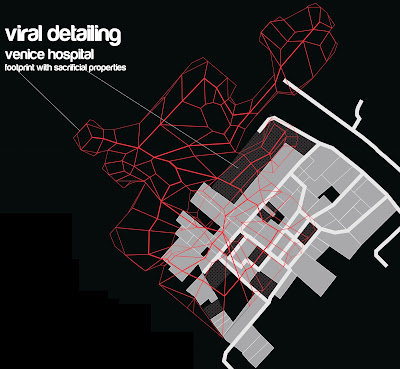For a project investigating Venice, the original city of synthetic land, the complex ground condition merits a uniquely detailed solution. If this detail is to be reducible to the design team which created it, as the overarching claim of this thesis posits, the design must be facilitated by a productive cooperation between architect (yours truly) and a professional who understands the complexity of grounding --- in this case, a geotechnical engineer. With the help of reports from the Universities of Padova and Bologna, USC, and the American Society of Civil Engineers with a soils specialist to unpack them, I've created a design for grounding the reinvigorated Venice Hospital.
My representative section diagram, right, identifies the many (mostly wooden) layers of deliberately placed sub-aquatic materials which overlay the silty sand of the Venetian Lagoon. This combination --- woody organic layers overlaying soil which exhibits significant deposits of loamy organic peat amid particles of silt and sand --- is highly susceptible to subsidence once exposed to oxygen.
My representative section diagram, right, identifies the many (mostly wooden) layers of deliberately placed sub-aquatic materials which overlay the silty sand of the Venetian Lagoon. This combination --- woody organic layers overlaying soil which exhibits significant deposits of loamy organic peat amid particles of silt and sand --- is highly susceptible to subsidence once exposed to oxygen.
Hollow steel piles minimize oxygen infiltration during driving; concrete fill seals them from future oxidation. The tilting of the piles (use of batter piling technique) allows them to be surface-bearing rather than friction-bearing, increasing the vertical load each pile is able to support; in addition, it allows all piles to find grounding in “sacrificial” plots with piles driven from multiple caps, leaving most of the individually-engineered properties intact and non-subsident without oxygen introduction.






No comments:
Post a Comment